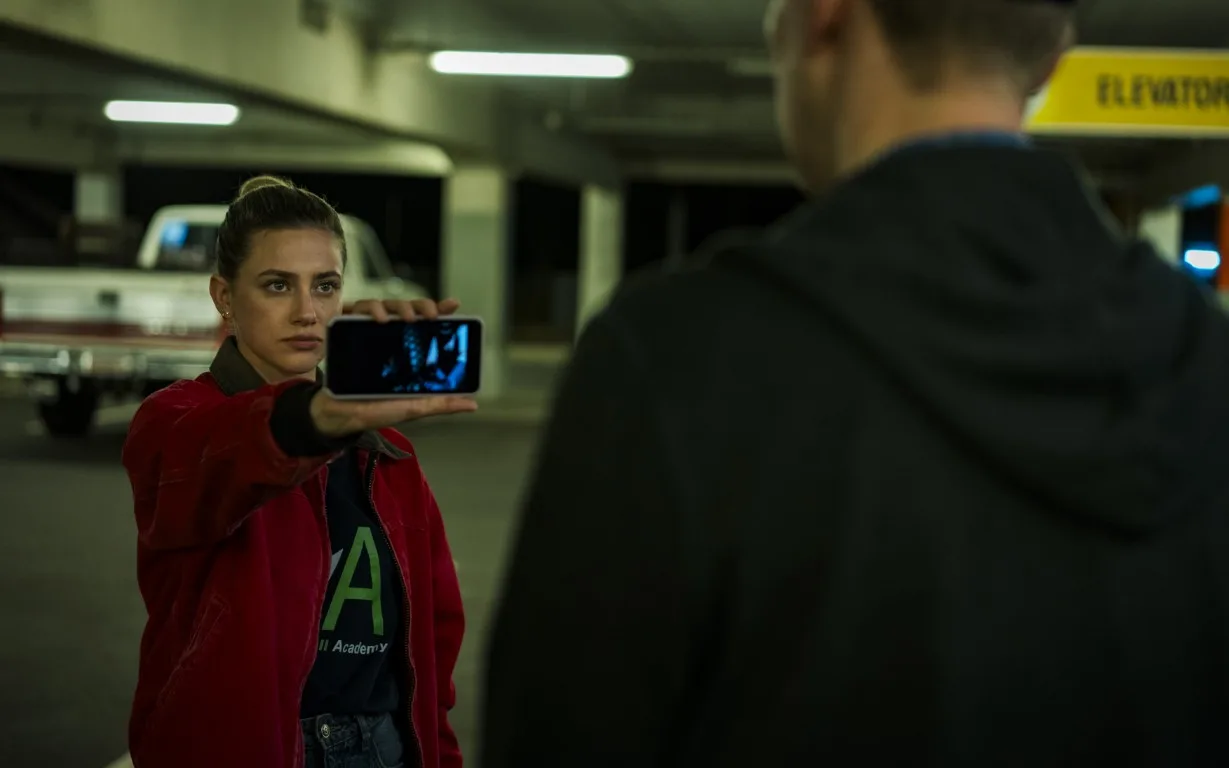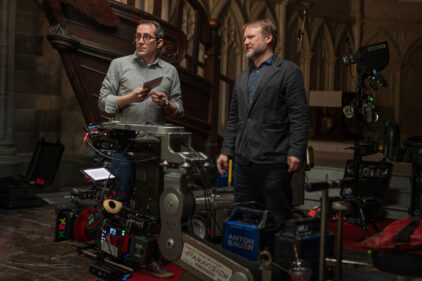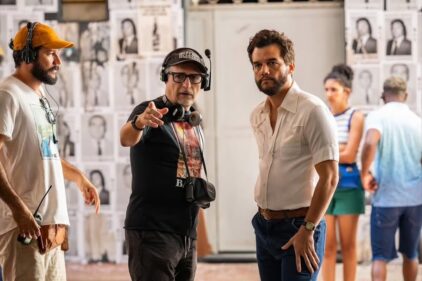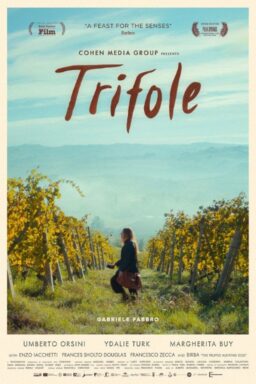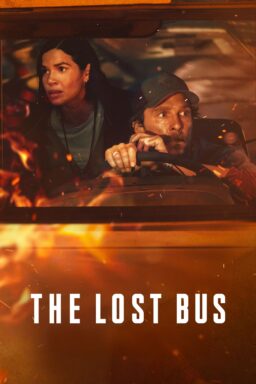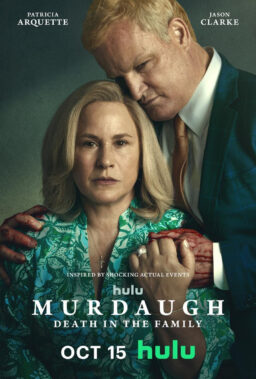The vocation that takes center stage in director Uta Briesewitz’s “American Sweatshop” is so depressingly prescient that it’s surprising its particularities haven’t been mined for a genre project until now.
The film focuses on Daisy Moriarity (Lili Reinhart), who works as a content moderator, where she reviews videos flagged for potentially problematic content and either deletes them or approves them for proliferation on the internet. While she doesn’t have to watch the entirety of each video, snapshots of the macabre quickly add up and take a toll. While viewers are spared from seeing any footage, we do see titles of the videos, and they’re enough to disturb (“Fetus in blender” is one that will forever haunt).
Sibling projects that come to mind include ones like “Blow Out” or “Red Rooms.” All these films showed how an overexposure to violent sounds and images can irrevocably scar a person’s soul. In lieu of showing the actual videos, Briesewitz shifts the focus to the workers themselves, mining horror from their dysfunction and numbness.
There’s a particularly poignant sequence where Daisy and her co-workers go to a bar to socialize, but they make small talk, so instead they go around sharing the one video that made them pass out. Their work is as lonely as it is desensitizing; in another moment, Daisy’s desk partner, Ava (Daniela Melchior), tells Daisy of a particularly disturbing video, “I’ve seen that one. It keeps popping up. But the footage is a little bit blurry, so it’s not too bad, right?” Daisy, for her part, when she’s not exposing herself to the worst corners of the internet, spends her time–ironically–doomscrolling, smoking weed, going on unfulfilling dates, or trying to study so she can go to medical school. Her work has hollowed her out.
It’s when she stumbles upon a particular disturbing video entitled “Nailed It” that she hits her breaking point. She becomes determined to find the creator of the video and bring him to justice, even if her supervisor and the local authorities believe the violence in the video is either faked or out of their purview of care.
For Reinhart, working on the film offered not only a way to learn more about a thankless vocation that rarely gets the spotlight, but also to reflect more on how to put social media in its proper place in one’s life. “People like Daisy, who are content moderators, really are the first responders of the Internet. While they’re protecting people, they’re also taking the full brunt of this harm. It’s a horrifying job to see humanity’s worst right before your very eyes and then go home at the end of the day,” she shared.
Over Zoom, Reinhart spoke with RogerEbert.com about how “American Sweatshop” helped her reimagine her relationship with social media, the ways embodied practices can counteract the trap of doomscrolling, and two Pixar animated films that curiously dovetail with this film.
This conversation has been edited and condensed for clarity.
Lili, “American Sweatshop” reminded me how, for every violent image or video I see on my timeline, there are many more that I don’t have to worry about because of people like Daisy.
Lili Reinhart: Yeah, even still, we’re faced with a barrage of violent images that manage to make their way to our screens.
I got rid of my Twitter during the 2024 election when men were threatening to rape me for voting for Kamala. I was like, “You know what? I think I’m done with this.” Not that those comments really land, but there was a boiling point where that platform in particular felt so disgusting that I didn’t want to be a part of it anymore. I just got rid of the app on my phone, and since then, I’ve never looked back. It’s been great.
You might be leading for the rest of us by example there.
You’re not supposed to know everyone’s opinion of you, nor is everyone in the world supposed to have an opinion of you. But today, our whole lives are now performances. Bo Burnham talked about it in the “Make Happy” special, where everyone is now performing all the time … at what point do you stop? I think that doing so has caused severe damage to people. We can’t frolic through life without thinking, “Oh, this might be a TikTok idea.” That’s something I’m personally guilty of.
What you’re sharing reminds me of something I read Maya Hawke say, where projects and casting sometimes are greenlit and funded based on the amount of followers a talent has on social media. I’m curious about how you navigate the importance of unplugging sometimes, but it also seems that to survive in this industry, you need to be online.
Speaking to casting specifically, I feel the industry is often crooked because there’s a disconnect between people who are right for a part and have fought for it, and those who the studios and the masses think should play the part. It makes sense, on the one hand, for the studio to take the following into account. You want the most famous person in your movie because you think it’s going to make it the most successful version of the movie. But I believe the best actor for a role in the movie is going to make the most successful version of the film. So when someone’s cast is based purely on numbers, we’ve seen time and time again that it doesn’t actually work or yield the results people think it does. It’s not a foolproof method for casting a film.
Personally, though, as it relates to being online … I haven’t had any of my projects come out since “Riverdale.” It came to the point where, for a while, people were like, “Are you still acting?” It’s like “Yes, bitch, I am!” But it takes time for the art to come out into the world. I did four indie projects in a row after “Riverdale,” and they take time to see the light of day. While working on films, I also launched a skincare line, and that really demanded my public face, which was difficult because I wanted to hide away for a bit.
I’d generally not like to be public-facing. Doing press, talking about my skincare line, doing talks and press junkets … it’s not a natural thing. I’m scared that anything I do will be taken the wrong way because I feel like the internet is just ready to fight at all times. That’s not a way to live, and unfortunately, it’s largely the environment we’re living in. I’m learning what it means to exist in it.
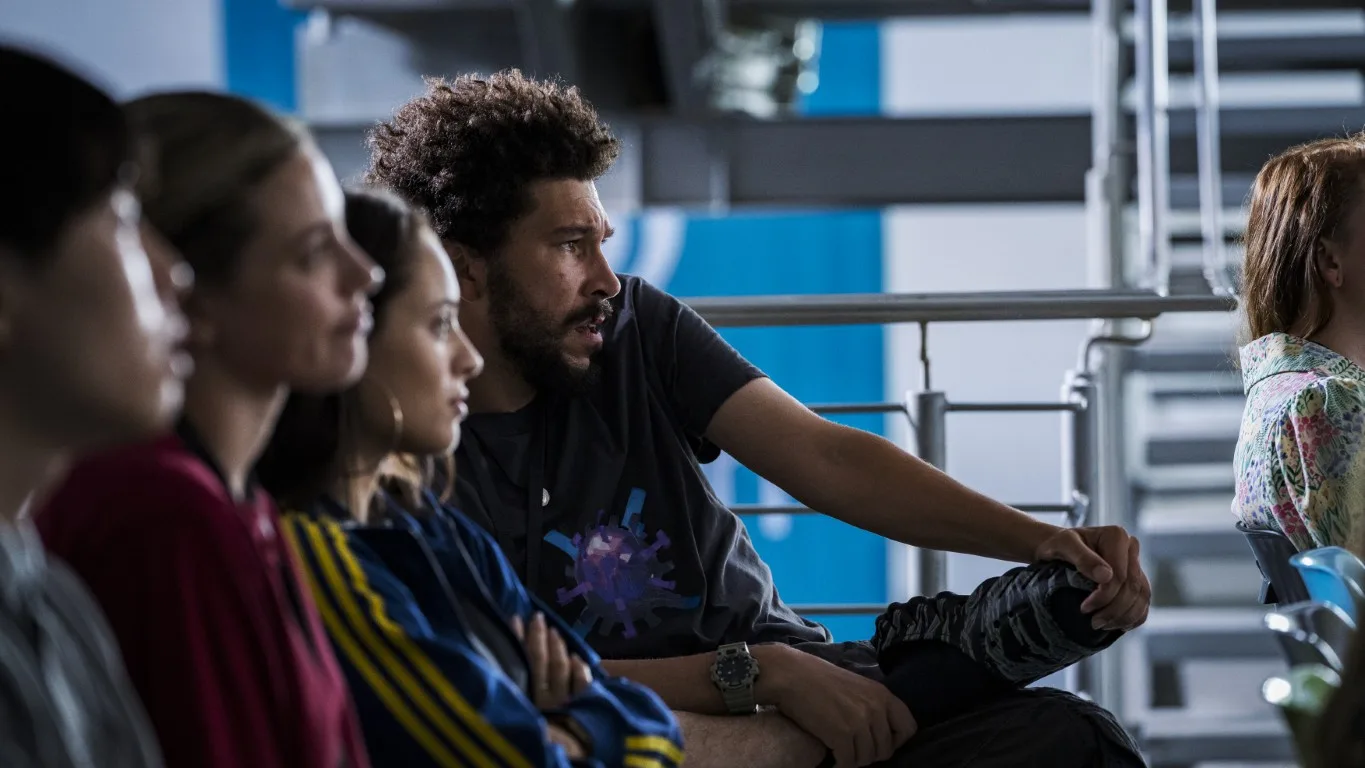
More on your performance as Daisy: so much of what you have to do on-screen here is react to what the audience does not see on-screen. Can you speak more about the mechanics and logistics of that? Were you freestyling various permutations of “shocked face,” etc.?
The crew did have this system set up on the computer where I could physically click “Approve” or “Decline” for these videos. There were no actual disturbing videos, but we could see disturbing captions … ones like “goat bites off person’s hand.” A lot of what the others had to do while on our screens was envision what we might see just based on those titles.
In the scene where Daisy sees the “Nailed It” video, in that moment, I was just staring at a blank screen. That’s typical for those sequences … it’s like people who work with green screens all the time. Before the scene, I asked for a moment, I put some headphones in, listened to some music, probably thought of some bad things, and then I just projected my emotions while looking at this monitor. Then I went in a few weeks later for the shots where you see close-ups of my eye. They played the footage of the actual “Nailed It’ video on this huge monitor in this little trailer we want to. While I was watching the footage, they were recording my live reactions, as the camera was focused on my eyes, which was cool.
Scenes like those extreme close-ups for the eyes capture one of the core themes of the film, which is that Daisy’s job is all-consuming. For her co-workers, this isn’t a vocation they can just clock out of at 5 o’clock. I think of that humorous or tragic scene where all of them should be enjoying time at the bar, but all they can do is talk about work.
I think we see far too much, and for those who do work like Daisy’s, they see even more. I remember when I was twelve and I was in my friend’s basement on her desktop computer, Googling things you should not be Googling when you’re that young. I was being exposed to anything and everything. When I first met with Uta and we spoke about this movie, we talked about our similar experiences and the traumatic things we’ve seen that have stuck with us. I think why this film hits so hard today is that we can see the most violent and graphic videos without any warning. People like Daisy, who are content moderators, really are the first responders of the Internet. While they’re protecting people, they’re also taking the full brunt of this harm. It’s a horrifying job to see humanity’s worst right before your very eyes and then go home at the end of the day. I think that’s why Daisy was a pothead … when you have this heavy burden, it makes sense that she didn’t want to be in this world when she wasn’t at work. She just wants to forget what she just went through.
There’s that moment where Daisy leaves and tells the kid she’s babysitting, Violet, not to worry. Violet says, “I know I’ll be fine, but I’ll get bored.” I find it striking that boredom, this idea of not being constantly stimulated, is what’s more terrifying than actual danger. I wonder if we need to learn to embrace boredom as a way to push back against overstimulation.
I think about this a lot. I have ADD, and I instinctively pick up my phone even when there’s nothing to look at. They call it popcorn scrolling, where you’re waiting in line and you just pick up your phone and start scrolling because you have nothing else to do. It has started in small ways … I tell myself to literally not scroll or pick up my phone when I’m walking from one area of a room to another. It’s hard because these technologies are genuinely addictive. Even last night, I was thinking about this. My car was stopped at a bus stop, and every single person waiting for the bus was looking at their phones. I thought, “Wow, this technology is so successful and has hypnotized people in such a way that I don’t think we could have ever fathomed.”

You’re also a writer, and I’d be curious to hear how these embodied creative pursuits can be the antidote to living life fully online.
Weirdly enough, my interest in poetry declined when I downloaded TikTok on my phone. When I was writing poetry, it was more so that if it came to me organically, I would write it in the Notes App on my phone. I’ll still write them … they’re not going anywhere. Sometimes I’ll send them to my boyfriend, but this is never going to go anywhere public. Doing practices like this, ones that don’t seemingly “serve a purpose,” helps push back against this mentality that everything needs to have a use or function. Some things can just exist to make you smile a little.
I’m a spiritual person as well, so practices–whether that’s sound baths, reiki, craniosacral therapy, and retreats–that help me focus on my interiority help me feel at peace. I’m happiest when I’m not looking at my phone. I practice Reiki, but it’s not a daily practice for me; being online is. I want to right the balance.
I think of the scene in “WALL-E” where the Captain falls off his chair and becomes more attuned to his surroundings. He realizes what his life is and also what more it could be because now there’s no longer a fucking hologram in front of him that’s distracting and pacifying him.
Well, on the note of “WALL-E,” Roger Ebert was famous for saying that movies are empathy machines and they serve as a way to put you in the shoes of someone else. What’s been a movie that has been an empathy machine for you?
God, what a good question. To be honest, the ones that come to mind within the last few years … ones where I cried a lot were “The Iron Claw” and “Inside Out 2.” Speaking specifically to “Inside Out 2,” I was really moved by the depiction of Anxiety … where she’s in that panicked state and Joy has to come and save her. I think if I were 12 years old and experiencing anxiety for the first time and had this movie to guide me, I could have pointed to it and told my parents, “This is how I feel.”
“American Sweatshop” is in select theaters now and will be available to watch on VOD on September 19th.

